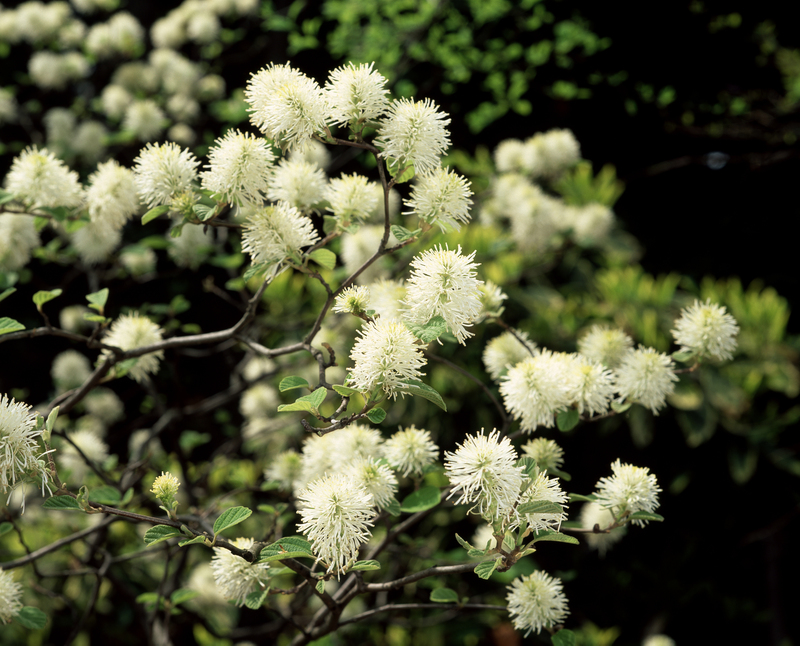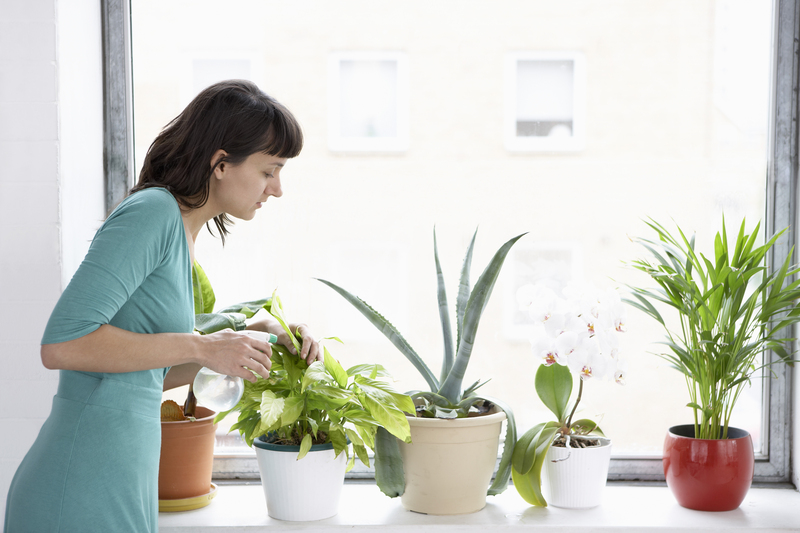Building a Whimsical Child-Friendly Garden
Posted on 23/09/2025
Building a Whimsical Child-Friendly Garden: Comprehensive Guide for Magical Outdoor Spaces
Imagine a garden where giggles fill the air, fairy doors peek from tree trunks, and fragrant blooms entice little fingers and noses. Crafting a whimsical, child-friendly garden combines creativity, safety, and nature's soothing magic to create an outdoor sanctuary that fosters curiosity and play. Whether you have a sprawling backyard or a cozy corner, this comprehensive guide will help you design, build, and enjoy a fantastical children's garden that delights the senses and sparks imagination.
Why Create a Child-Friendly Whimsical Garden?
Children connect naturally with nature. Outdoor spaces act as powerful platforms for exploration, discovery, and learning. A whimsical child-friendly garden amplifies these benefits by blending safe play with enchanting design and playful elements. Let's explore the fundamental advantages:
- Develops imagination and creativity with themed play zones, winding paths, and interactive features.
- Encourages physical activity as children climb, jump, balance, and dig.
- Promotes sensory development through touch, smell, taste, sight, and sound experiences.
- Nurtures a love for nature and gardening from an early age.
- Provides a safe space for socialization, relaxation, and mental well-being.
What Makes a Garden "Whimsical" and Child-Friendly?
The whimsical garden style is all about imagination and delight. Picture winding stepping stones, fairy houses, secret tunnels, vibrant flowering plants, and quirky ornaments. For a child-friendly garden, safety and accessibility are vital. Blend these two concepts by seamlessly integrating playful elements with safe, practical features.

Planning: Key Steps for Designing a Whimsical Children's Garden
1. Assess Your Space and Set Clear Boundaries
- Examine Light, Soil, and Drainage: Observe your garden area throughout the day. Identify sunny and shady spots, check for good drainage, and test the soil quality for planting success.
- Map Out the Layout: Use a simple sketch to plan different zones: play, planting, relaxation, and discovery.
- Establish Safe Boundaries: Install fences, hedges, or natural barriers around your child-safe whimsical garden to keep young explorers secure.
- Consider Accessibility: Create wide, smooth paths for little feet and accessibility for strollers or mobility aids if needed.
2. Choose a Magical Theme
Selecting a theme makes your project more cohesive and exciting. Popular themes for whimsical, child-friendly gardens include:
- Fairy or Gnome Gardens: Add tiny houses, bridges, and magical pathways.
- Secret Garden: Use archways, hidden nooks, and lush plantings for a mysterious effect.
- Woodland Wonderland: Incorporate logs, tree stumps, and native wildflowers.
- Rainbow Paradise: Feature color-themed beds, vibrant art, and multicolored stepping stones.
- Nature Science Lab: Set up bug hotels, weather stations, and pollinator gardens for hands-on learning.
3. Safety First: Kid-Friendly Outdoor Design Principles
Every enchanted garden for children must be safe. Child-friendly garden features should always:
- Avoid toxic plants: Make sure all greenery is safe if nibbled or touched. (See our list below!)
- Exclude sharp-edged ornaments and tools: Pick rounded shapes and secure all equipment out of reach.
- Install non-slip surfaces: Use rubber mulch, bark, or grass for safe landings.
- Ensure visibility: Parents should always be able to see children at play.
- Secure water features: If including fountains or ponds, use mesh covers or opt for shallow, supervised designs.
4. Involve Your Children in Garden Planning
A magical children's garden is most enchanting when young minds help co-design its elements. Discuss their preferences, favorite stories, and even let them assist in picking plants or decor. Their involvement fosters pride and ownership.
Creative Features for a Whimsical Child-Friendly Garden
Enchanted Play Areas
- Natural Play Structures: Willow tunnels, log balance beams, or simple den-building materials create ever-changing interactive zones for active play.
- Miniature Houses & Hideaways: Add fairy doors to tree bases, install a play teepee, or tuck a reading nook under a leafy arbor.
- Adventure Trails: Lay curvy stepping stones, "hopscotch" slabs, and winding paths lined with solar fairy lights to guide explorations.
- Musical Zones: Hang wind chimes, xylophones, or make percussion walls from recycled pots and pans for sensory fun.
Edible & Sensory Plantings
- Strawberry & Herb Patches: Easy-to-grow edibles like strawberries, mint, basil, and cherry tomatoes invite hands-on harvesting and snacking.
- Fragrant Flowers: Plant sweet peas, lavender, gardenias, or jasmine to stimulate the sense of smell.
- Touch-Friendly Foliage: Lamb's ear, velvety sage, or ornamental grasses encourage gentle exploration.
- Wildflower Beds: Attract butterflies and bees while creating painterly splashes of color.
Creative Decor and Artistic Touches
- DIY Stepping Stones: Let children create their own with handprints, mosaic tiles, or glittery gems.
- Upcycled Garden Art: Paint old tires or boots as planters, or build wind spinners from bottle caps and sticks.
- Storybook Features: Add signage inspired by favorite tales: "Rabbit's Garden," "Pixie Lane," "Dinosaur Dig!"
- Birdhouses and Feeders: Encourage wildlife visits and teach observation skills.
Secret Spaces & "Grow-Your-Own" Corners
- Teepee Huts: Grow pole beans or morning glories around bamboo canes to create living tents.
- Sunflower Houses: Plant a circle of tall sunflowers and weave willow branches for a natural, shady hideout.
- Sensory Trails: Design winding paths with changing textures--soft moss, crunchy gravel, smooth pebbles, and aromatic herbs underfoot.
Best Plants for a Whimsical Child-Safe Garden
Selecting child-safe plants is the heart of any family-friendly landscape. Here are top choices that blend beauty, resilience, and safety:
- Sunflowers: Fast-growing and dramatic, they make beautiful living walls or houses.
- Snapdragons: Fun to "snap" and non-toxic to children and pets.
- Marigolds: Keep bugs at bay and provide bright color all season.
- Sensory Herbs: Mint, basil, chives, and thyme are all vigorous, aromatic, and tasty.
- Lamb's Ear: Soft, silvery leaves perfect for gentle touches.
- Nasturtiums: Edible flowers and leaves with vibrant, inviting colors.
- Sweet Peas: (Ensure you select ornamental varieties--the seeds of some types aren't edible!)
- Blueberries, Strawberries, Raspberries: All easy-to-grow for snacking straight from the stem.
Avoid: Foxglove, oleander, yew, laburnum, daffodil bulbs, and any unfamiliar "milky" saps or berries unless you're certain they're non-toxic.
Making the Most of Your Whimsical Family Garden All Year Round
Spring & Summer:
- Sow annuals and plant sunflowers for bold, fast color and instant gratification.
- Host fairy hunts or nature scavenger games with hidden treasures and challenges.
- Install water play areas with splash-safe features and shaded shelter.
Autumn:
- Collect and craft with natural materials like leaves, feathers, and seed pods.
- Grow pumpkins and gourds for harvest-time decorating and cooking.
- Prepare overwintering habitats for beneficial insects, hedgehogs, or frogs.
Winter:
- Hang bird feeders or suet balls to attract winter wildlife.
- Grow "fairy lights" and evergreens to maintain color and magic throughout short days.
- Plan next year's improvements together with your children over hot cocoa!
Top Tips for Maintaining a Whimsical Child-Friendly Garden
- Choose low-maintenance, hardy plants that won't require constant care or dangerous chemicals.
- Regularly inspect structures for wear, splinters, and stability.
- Mulch paths and play areas to suppress weeds and keep surfaces safe for bare feet.
- Rotate play features and add new decorations each season to keep the garden feeling fresh and fun.
- Store tools and fertilizers securely and use only organic, child-safe solutions for pest and weed control.
Encouraging Learning and Connection with Nature
A child-friendly whimsical garden isn't just about play. It's a living classroom for ecological awareness, creativity, and mindfulness. Try these fun learning activities:
- Plant a "Snack Garden" and teach children about seed-to-plate food cycles.
- Create a weather chart and observe how plants and animals respond to changing conditions.
- Build a compost heap together and watch decomposition in action.
- Start a nature journal with pressed flowers, bark rubbings, and seasonal observations.
- Introduce basic gardening tools with child-safe trowels and watering cans for hands-on stewardship.

Common Mistakes to Avoid When Designing a Magical Children's Garden
- Overcrowding plants: Leave space for little ones to move, play, and explore.
- Including unsafe items: Double-check plant lists and avoid hazardous garden decor.
- Neglecting supervision: Even the safest child-friendly gardens benefit from attentive adults.
- Forgetting accessibility: Paths should accommodate tricycles, wheelbarrows, and those with mobility challenges.
- Skimping on shade: Protect tired feet and sensitive skin with trees, pergolas, or shade sails.
Final Thoughts: Nurturing Wonder and Growth in a Whimsical Family Garden
Building a whimsical child-friendly garden is a magical adventure in itself--an ongoing process of discovery, creativity, and joy. With these tips and design inspirations, your outdoor haven will become a cherished destination for laughter, learning, and cherished family memories. Through each sensory-rich flowerbed, secret path, and play nook, you'll cultivate not just plants, but a lifelong bond between children and the wonders of the natural world.
Ready to start your whimsical garden journey? Gather your family, sketch your dreams, and let imagination be your guide. The best garden for children is one that grows alongside them--filled with enchantment, safety, and endless possibility.



